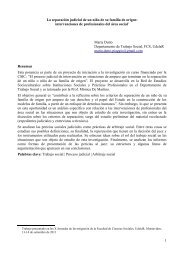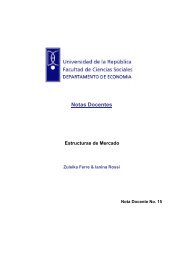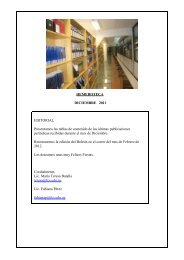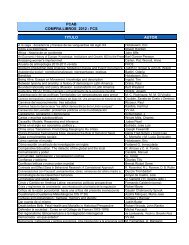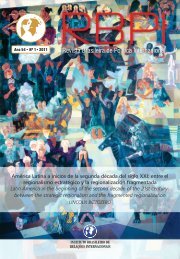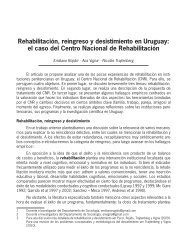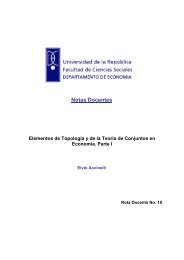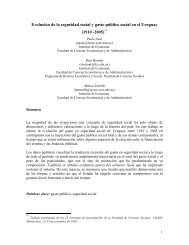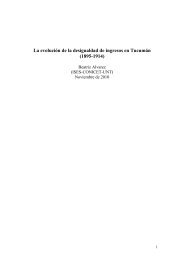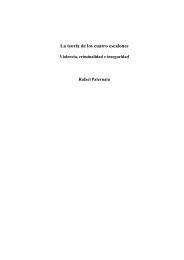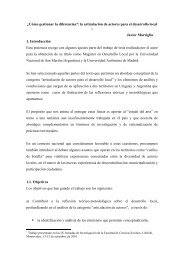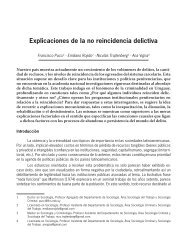Paulo Ravecca - Facultad de Ciencias Sociales
Paulo Ravecca - Facultad de Ciencias Sociales
Paulo Ravecca - Facultad de Ciencias Sociales
You also want an ePaper? Increase the reach of your titles
YUMPU automatically turns print PDFs into web optimized ePapers that Google loves.
Chart 1. Gini in<strong>de</strong>x by country (Showing latest available data)<br />
Rank Countries Amount<br />
(top to bottom)<br />
#6 Bolivia 60.6<br />
#11 Brazil: 56.7<br />
#15 Mexico 54.6<br />
#16 Colombia 53.8<br />
#17 Chile 53.8<br />
#28 Peru 49.8<br />
#30 Argentina 48.3<br />
#34 Costa Rica 46.5<br />
#37 Uruguay 45.2<br />
#39 United States 45<br />
#70 United Kingdom 36.8<br />
#121 Swe<strong>de</strong>n 25<br />
#122 Denmark 23.2<br />
Weighted average 40.5<br />
Definition: This in<strong>de</strong>x measures the <strong>de</strong>gree of inequality in the distribution of family income in a country.<br />
The in<strong>de</strong>x is calculated from the Lorenz curve, in which cumulative family income is plotted against the<br />
number of families arranged from the poorest to the rich.<br />
Source: CIA World Factbook, 14 June, 2007<br />
2.2 The fall and the warriors: the 60´s<br />
The violence of the 19th century en<strong>de</strong>d with the military <strong>de</strong>feat of Aparicio Saravia<br />
(Blanco Party) in 1907, with which the Uruguayan state achieved the most important Weberian<br />
requirement of statehood. In the following <strong>de</strong>ca<strong>de</strong>s, Uruguayan society ten<strong>de</strong>d to have a very<br />
exalted self-perception. The World Wars allowed certain economic welfare even in the absence<br />
of a sustainable planned path for <strong>de</strong>velopment. The elites, during the so-called period of “second<br />
Batllismo” (1942-1958), ten<strong>de</strong>d to be more irresponsible with the management of the state,<br />
colonizing it via “rings of clientelism”. For instance, there was a spectacular increase in the<br />
number of civil servants between 1941 and 1955. Some intellectuals (called the “critical<br />
generation” by Rama, 1972) used to say that Uruguay was dreaming in many and problematic<br />
ways, and that its waking would be terrible. They were right. Uruguayan multidimensional<br />
“exceptionalism” reached its limits in the second half of the 20th century (Filgueira and<br />
Filgueira, 1994; Rama, 1989). A traumatic process began, through which the country may still be<br />
passing. Symptomatic of this is the fact that the Uruguayan intelligentsia commonly thinks about<br />
the country through the notion of “crisis” (Paternain, 2002).<br />
10



